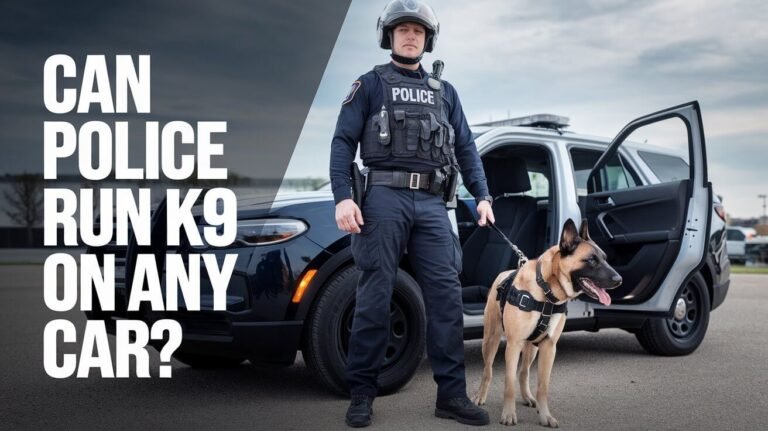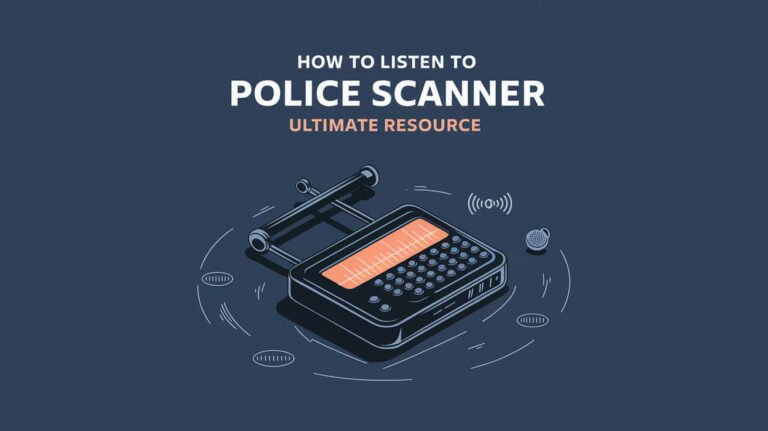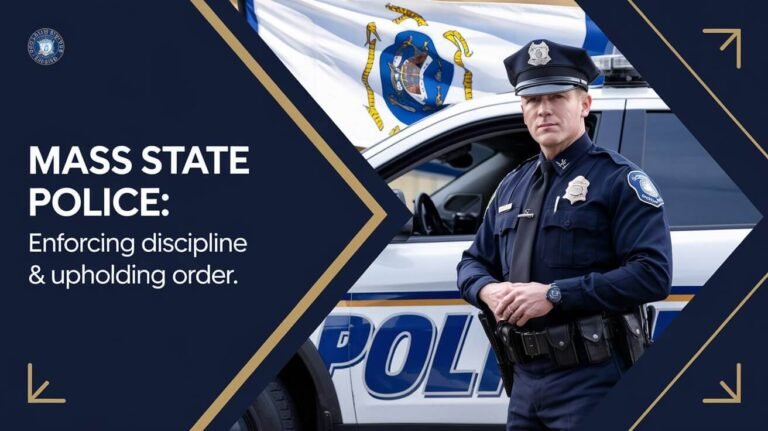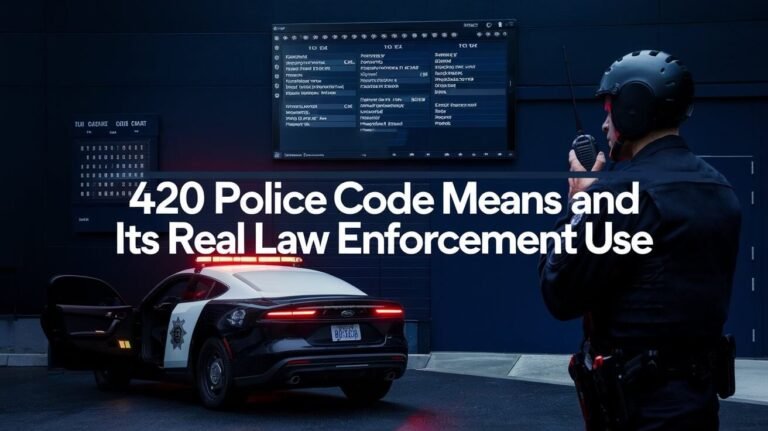Police Scanner Frequencies: Stay Updated on Local Channels
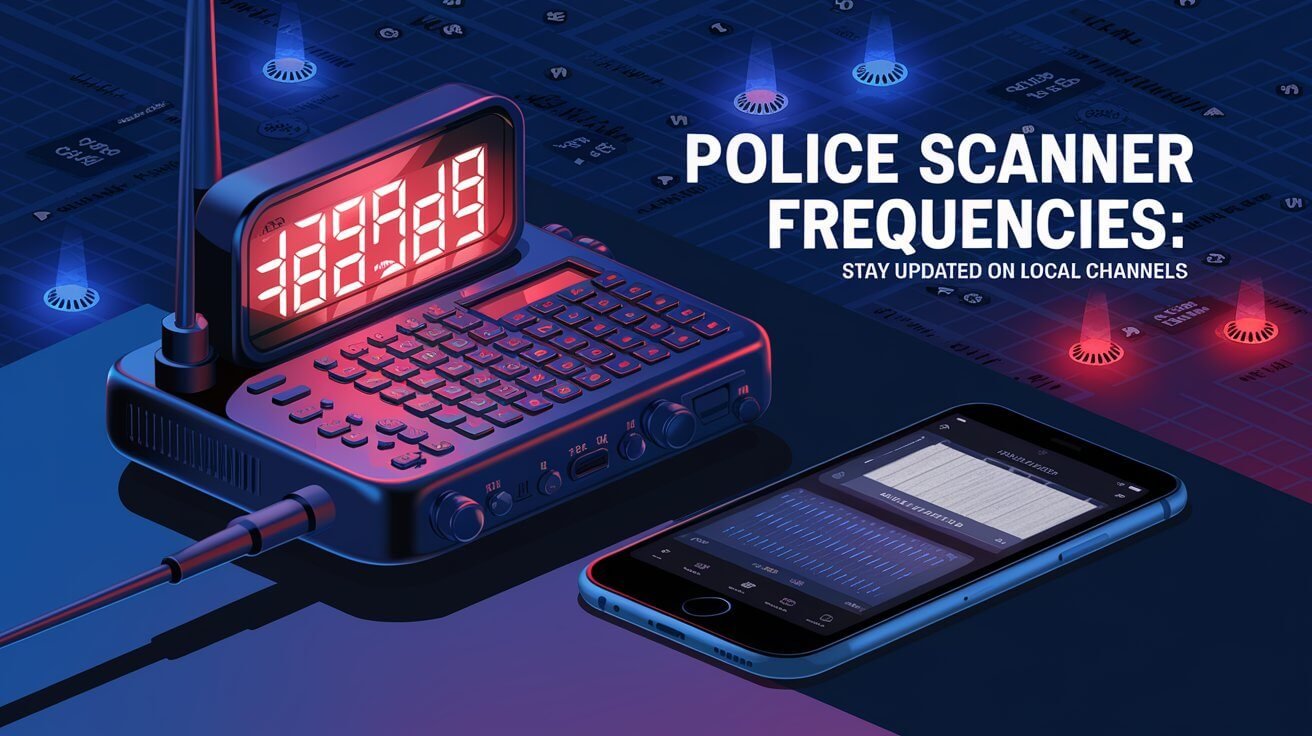
Knowing what’s happening with emergency services and public safety is key today. Listening to police scanner frequencies helps you stay updated on emergencies. The Federal Communications Commission (FCC) makes sure these frequencies are used right for public safety.
With tools like the Uniden Bearcat SDS200, you can listen to many police scanner frequencies. This keeps you informed about emergency services near you.
It’s important to know about police scanner frequencies if you care about public safety and emergency services. By listening to these frequencies, you can learn a lot about emergency services. The Uniden Bearcat SDS200 is a great tool for this, letting you scan lots of channels fast.
Radio Bands Used in Police Communications
Police communications use different radio bands for clear and quick talks. The main ones are VHF (Very High Frequency) and UHF (Ultra High Frequency). VHF has low band (25-50 MHz) and high band (150-174 MHz). UHF goes from 450-470 MHz.
These bands serve various needs like dispatch, tactical work, and urgent calls. For instance, VHF low band is good for rural areas. VHF high band is better for city areas. UHF is mainly for tactical and emergency talks.
| Radio Band | Frequency Range | Usage |
|---|---|---|
| VHF Low Band | 25-50 MHz | Rural areas, dispatch |
| VHF High Band | 150-174 MHz | Urban areas, dispatch |
| UHF | 450-470 MHz | Tactical operations, emergency communications |
The National Scanner Frequency Guide lists key frequencies for police, fire, and emergencies. Knowing about police radio bands helps us see how vital clear communication is in emergencies.
Common Police Scanner Frequencies Across Major Cities
Knowing the common police scanner frequencies is key to staying informed in major cities. These frequencies help emergency services talk to each other and handle emergencies. Some, like VHF high band frequencies, are the same for everyone, making it easier for agencies to work together.
In the United States, 39.460 MHz and 45.880 MHz are often used for police scanners. The VTAC channels (Tac 1 to Tac 7) run from 155.7525 MHz to 159.4725 MHz, using 156.7 Hz CTCSS for simplex operations. UHF MED channels, used in emergencies, have different paired repeater frequencies.
- VLAW31 and VLAW32 are the main nationwide law enforcement frequencies, at 155.4750 MHz and 155.4825 MHz.
- Big cities like Los Angeles, Boston, New York, and Chicago use UHF (450-470 MHz) and UHF-T (470-512 MHz) systems for public safety.
- For UHF public safety interoperability, a 156.7 Hz CTCSS tone is recommended for transmit, with CSQ as the receiver setting.
Knowing these frequencies helps people stay updated on emergency services in their area. It’s important to remember that using police scanner frequencies might be restricted in some places. Always check with local authorities before using a police scanner.
Digital vs Analog Police Communications
Police communications come in two main types: digital and analog. Digital systems, like P25, are more secure and efficient. They use encryption and priority messaging.
Analog systems, on the other hand, use traditional signals. They can be more prone to interference and eavesdropping. But, they are often cheaper to set up and keep running. The Federal Communications Commission (FCC) makes sure both types use the right frequencies.
Benefits of Digital Systems
Digital systems, including P25, have many advantages. These include:
- Improved security through encryption
- Increased efficiency with priority messaging
- Better resistance to interference
- Ability to transmit data and voice communications simultaneously
Trunked Radio Networks
Trunked radio networks are a key part of digital communications. They let many agencies share a few frequencies. This makes communication more efficient and reduces the need for many channels. Many trunked radios work with both analog and digital signals. But, you need a scanner that can handle trunked frequencies.
| System Type | Key Features |
|---|---|
| Digital Police Communications | Encryption, priority messaging, resistance to interference |
| Analog Police Communications | Less expensive, traditional analog signals |
| P25 Digital Systems | Secure, efficient, priority messaging |
Digital systems, like P25, have big advantages over analog ones. As the FCC pushes for digital systems, many places will switch. This means we’ll need better digital scanners.
Scanner Equipment Requirements
To start using a police scanner, you need to know what equipment is required. A police scanner lets you listen to radio frequencies used by emergency services. When picking a scanner, think about the type, antenna, and other needed gear.
The Uniden Bearcat SDS200 Police Scanner is a top choice. It’s a digital scanner that can pick up both digital and analog signals. Digital scanners are key for APCO-25 systems and offer many channels. Look for features like fast scan speed, search mode, and GPS.
Here are some important features to consider in scanner equipment:
- Frequency scan speed: Choose a scanner that scans over 30 channels per second.
- Search mode: Most scanners come with search mode. It helps find channels, including hidden ones.
- GPS capability: Some scanners have GPS. They need a GPS device to update frequencies as you move.
Also, check out this table for a comparison of popular scanners:
| Scanner Model | Frequency Range | Channel Capacity |
|---|---|---|
| Uniden Bearcat SDS200 | 25-1300 MHz | Unlimited |
| Whistler WS1040 | 25-1300 MHz | 1800 |
Knowing what scanner equipment you need and picking the right one, you can keep up with emergency services in your area.
Legal Regulations for Scanner Operation
Understanding legal rules for using scanners is key. The Federal Communications Commission (FCC) controls radio frequencies in the U.S. The 1934 Communications Act says information on public airwaves isn’t private. This makes it legal to own and use police scanners in the U.S.
But, some radio bands are off-limits on scanners. This includes cell phones and military bands, where privacy is assumed. Laws about using police scanners differ by state. They fall into two main areas: using a scanner while driving and using it to help commit a crime.
States that ban using scanners while driving include:
- Florida
- Indiana
- Kentucky
- New York
- Minnesota
States that limit scanner use for crime include California, New Jersey, and Michigan. Breaking these laws can lead to fines or jail time. Knowing these rules helps avoid trouble and ensures safe scanner use.
| State | Restriction | Penalty |
|---|---|---|
| Florida | Use while driving | Varies |
| California | Use in furtherance of a crime | Up to 1 year in jail and a $1,000 fine |
| Rhode Island | Use in furtherance of a crime | Up to 5 years in prison and a $5,000 fine |
Emergency Response Channel Organization
Having a well-organized channel structure is key for emergency response. A police scanner helps users stay updated on emergencies. It’s important to sort channels by their importance and how often they’re used.
A good plan should mix local and national channels. For example, the National Guard’s emergency frequency (34.90 MHz) and FEMA’s disaster relief channel (138.225 MHz) are important. Also, include channels for local authorities like police and fire departments. Here’s a table with some examples:
| Channel | Frequency | Description |
|---|---|---|
| National Guard Emergency | 34.90 MHz | Nationwide emergency channel for the National Guard |
| FEMA Disaster Relief | 138.225 MHz | Primary FEMA channel for disaster relief operations |
| Local Police Emergency | 155.475 MHz | Local and state police emergency communication channel |
Organizing emergency channels well lets users quickly get important info. They can then respond to emergencies fast. This way, they use their police scanner to stay informed and ready.
Programming Your Scanner for Local Departments
Programming your scanner for local departments is key. It’s a complex task, but with the right tools, it’s easier. Local frequency guides and online resources can help you set up your police scanner.
To begin, find the local frequencies used by your departments. Websites like Radio Reference offer a vast database of radio frequencies. Just enter your zip code to find frequencies for police, fire, and emergency services. This makes it easy to program your scanner.
Setting Up Priority Channels
After finding the frequencies, set up priority channels. This organizes channels by importance. For instance, you can prioritize local police, then fire and emergency services.
Creating Scanner Banks
Creating scanner banks is another step. A bank groups related channels together. You can have one for police, another for fire, and more. This makes switching between channels easy.
Following these steps and using the right resources, you can program your scanner for local departments. This is vital for staying informed about your community. With the right knowledge, you can receive signals from local law enforcement and stay updated on local events.
Regional Frequency Variations
Police scanner frequencies vary by region. This is because government agencies regulate radio frequencies differently around the world. In the U.S., there are four main frequency bands: low-band VHF, high-band VHF, low-band UHF, and high-band UHF. Knowing these variations helps with communication and staying updated on emergencies.
Some frequencies are used nationwide for emergencies or between agencies. For example, the high-band VHF range from 169-172 MHz has eight frequencies for public use. These are called “traveling frequencies” and work well across the U.S. The 700/800 MHz band is also used for public safety, with the 800 MHz part (806-824 MHz and 851-869 MHz) set aside for this purpose.
To understand these variations, it’s key to know the different frequency bands and their uses. Here’s a table that shows the frequency bands and their uses:
| Frequency Band | Use |
|---|---|
| Low-band VHF (49-108 MHz) | Emergency communications, inter-agency communications |
| High-band VHF (169-216 MHz) | Public safety radio systems, traveling frequencies |
| Low-band UHF (450-806 MHz) | Public safety radio systems, commercial communications services |
| High-band UHF (900-952 MHz) | Two-way voice communication, commercial communications services |
Understanding regional frequency variations and police scanner frequencies helps us navigate radio communications better. It’s vital for personal or professional use. Knowing these variations ensures effective communication and safety.
Signal Interference Prevention Methods
To avoid signal interference with a police scanner, knowing the common causes is key. The Uniden Bearcat SDS200 Police Scanner is top-notch, but interference can happen. It’s important to understand and prevent it.
Interference often comes from other wireless devices and physical barriers. To fight it, try moving the scanner, using an external antenna, or filtering signals. These steps can help keep your scanner clear.
Common Interference Sources
- Other wireless devices, such as cordless phones and microwaves
- Physical barriers, such as hills and buildings
- Electrical interference from nearby power lines or electrical devices
Knowing the causes of interference helps prevent it. This is vital for those who need their scanner for work, like emergency responders. By taking steps to prevent interference, you can improve your scanner’s performance.
Reception Enhancement Tips
To boost reception and fight interference, consider a signal amplifier or noise-reducing filter. These tools can strengthen the signal and cut down on noise. This makes your communications clearer and more reliable.
Conclusion: Responsible Scanner Operation
As we wrap up our look at police scanner frequencies, it’s key to stress the need for responsible use. The Federal Communications Commission (FCC) oversees radio frequencies in the U.S. Users must follow their rules to use scanners legally and ethically.
Police scanners are great for keeping up with public safety and staying informed. But, we must respect the privacy and security of emergency services. Listening to encrypted channels or sharing sensitive info can harm critical operations and risk lives.
Using scanners responsibly means only for personal awareness and security, not for illegal or harmful purposes. By sticking to FCC guidelines and focusing on community safety, we can enjoy scanners while maintaining high ethical standards.


